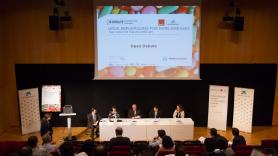1. The data, the problem, the opportunities
In Europe, a rare disease is one that affects no more than one in 2,000 people. Despite the low percentage (0.05%), there are roughly 7,000 identified rare diseases and, together, they affect between 6% and 8% of the global population. The problem is even more significant taking into account the data shared by Noel Southall of the United States National Institutes of Health (NIH): "50% of those affected are children and 30% of them die before the age of 5. And more than 90% of these diseases have no approved treatment.”
Drug development is a complicated and often frustrating process. For Pierre Meulien, executive director of the Innovative Medicines Initiative (IMI), "It is probably the least efficient process of any sort of industry.” Southall also shared data on the development chain: of ten thousand drugs involved in laboratory research targeting any one disease, only 250 go on to the preclinical phase. Out of these, only 5 will be tested in clinical trials and only one will gain regulatory approval.
Research into treatments for rare diseases is even more difficult, as there are so few patients with each condition. On one hand, companies tend to be less interested because their anticipated profits are lower. And even though measures incentivizing this work have “encouraged” companies, the flipside of the situation is that the drugs are normally quite expensive. On the other hand, the lack of patients makes it more complicated to study and conduct representative clinical trials.
A new concept has opened an encouraging new door: drug repurposing. This consists in “recycling” drugs approved for one disease that, given their characteristics (or even their side effects), may benefit another. For Bruce Bloom, president of Cures Within Reach, this approach may work with any disease, “even ours, those that have traditionally been neglected.”
The advantages are undeniable. Cumulative knowledge on the safety and behavior of these drugs massively cuts down of the time and money required. In fact, the 15 years it takes, on average, to develop a drug could be cut down to just three.
However, there are obstacles in this path as well. For example, the hurdles put up by pharmaceutical companies. “Imagine a drug approved to treat diabetes is given to children and there is some sort of problem,” said Bloom. Their objection “is understandable. But we can use generics.”
To combat the hurdle of atomization, that the scarce number of patients are very spread out, there are networks. Pierre Meullien wondered why there isn’t a joint international project in health like the CERN for physics. Given their characteristics and needs, “rare diseases could be an opportunity, a great unifier.”
These networks mean forging bonds, between people and data, and the role of patients seems to be key.



